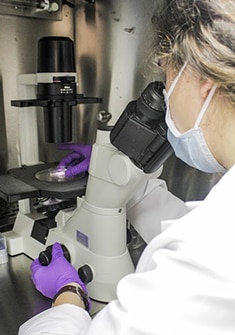Research Updates

Protein shuffles microorganism DNA: Many bacteria and microorganisms have an immune system known as the “clustered regularly interspaced short palindromic repeat” system, or CRISPR, that allows for the recognition and destruction of viral DNA. NIDDK researchers have discovered that a protein related to one that enables CRISPR can relocate fragments of DNA. Results were published in Nucleic Acids Research.
Pathway for reducing appetite identified: NIDDK researchers have identified a new pathway involved in reducing appetite. The finding implies a potential target for a future medication to treat obesity. Results were published in The Journal of Clinical Investigation.
Activating receptors triggers increased food intake: Designing appetite-suppressing drugs to treat obesity requires mapping the neural circuits that regulate eating. The researchers showed that activation of Gs-coupled receptors expressed by a specific subpopulation of neurons led to an increase in eating in mice. Results were published in Nature Communications.
Type 1 diabetes – reaping the rewards of a targeted research investment: NIDDK Director Dr. Griffin P. Rodgers and other NIDDK staff outline the ongoing research and accomplishments of the Special Statutory Funding Program for Type 1 Diabetes Research, a special appropriation from Congress specifically for type 1 diabetes research that has been ongoing since 1998. That special funding has been allocated in several ways, including through research to identify the causes of the disease as a step toward developing prevention strategies, efforts to find therapies for the disease and its complications, and development of new technologies for management such as the artificial pancreas, and many other methods. The article was published in the February 2016 issue of Diabetes.
Encapsulated cells treat diabetes in mice: Researchers funded by several components of NIH, including NIDDK, developed a material to encase human insulin-producing cells and protect them from the immune system. When transplanted into diabetic mice, the encapsulated cells treated the diabetes without triggering an immune reaction. The findings are a step forward in achieving long-term therapy for people with type 1 diabetes. The article was published in the Jan. 25 issue of Nature Medicine and Nature Biotechnology.

